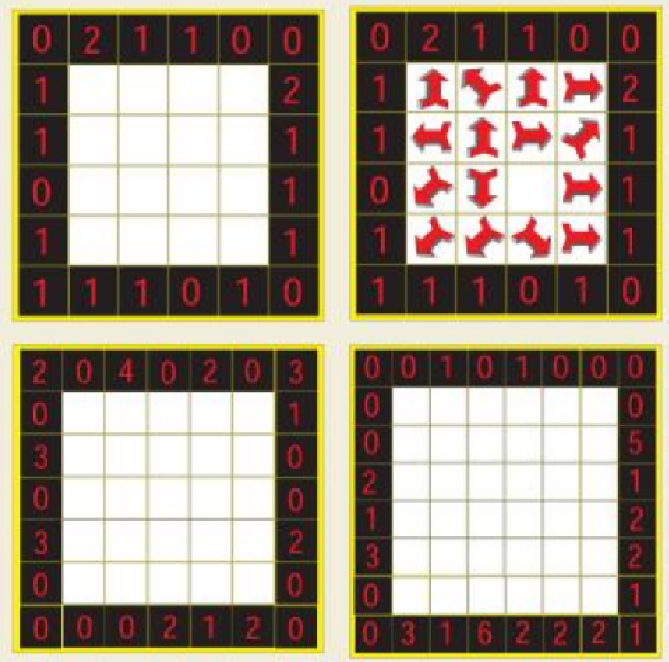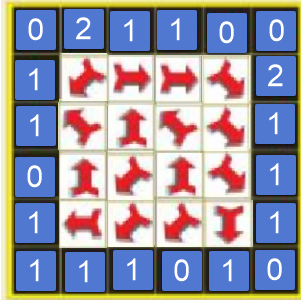I came across this riddle in The Big Book of Brain Games by Ivan Moscovich (Riddle #12)
the book does provide the solution, but I've got no clue how to go about solving it.
If you do own this book, I suggest you open it right now and try to solve the riddle yourself (but don't look at the answers!); if not, here's the riddle:
The object of this sort of riddle is to place arrows in the boxes according to the following rules:
The arrows must point in one of the eight main compass directions (north, south, east, west, northeast, southeast, northwest, and southwest); the number of arrows pointing to each number in the outer boxes must equal the value of that number; and each box must have an arrow in it. The sample shown (upper right) is a flawed attempt at a solution, since since no arrow can be placed on the blank square within the rules of the game, and one of the outer squares has no arrow pointing at it.
can you find complete solutions for the for the arrow number boxes of order 4 (upper left), order 5 (lower left), and order 6 (lower right)?
So, to sum it up, you need to:
1. give the solution for the original riddle
2. explain the method for solving the riddle
3. (not necessary but much appreciated) provide the background for this riddle; i.e: who created it, what mathematical concept it is based on, etc.



